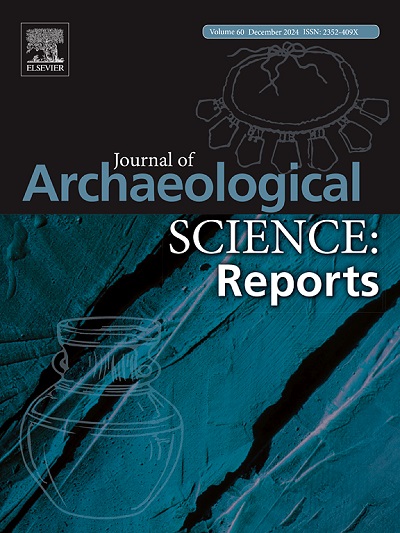A geochemical survey of the Antas Valley, Sardinia: Medieval metallurgy and modern slag recycling?
IF 1.5
2区 历史学
0 ARCHAEOLOGY
引用次数: 0
Abstract
Geochemical surveys of the Antas Valley in Sardinia, Italy, have revealed significant zinc and lead concentrations along the Antas River floodplains, suggesting the presence of medieval ore-processing workshops which are otherwise hard to detect. While the zinc concentrations were found to be dispersed and probably related to the erosion of zinc-rich dolomite, the lead concentrations were more localised on the banks of the river, suggesting an anthropogenic origin. Three large concentrations of lead were found to coincide with deposits of black glassy slag, a by-product of ore processing. Analysis of the slag revealed a high lead content (around 75%) and very low zinc content, which along with historical research suggests either medieval ore processing for silver and/or 19th-century slag recycling. The near absence of zinc in the slag supports the 19th-century recycling hypothesis, as this period saw an increased demand for silver, lead and zinc and the development of processes to extract it from older slag. Further research, including dating of the slag and excavation of the lead-enriched areas, is required to confirm the origin of the slag deposits.
撒丁岛安塔斯山谷的地球化学调查:中世纪冶金和现代矿渣回收?
对意大利撒丁岛安塔斯山谷的地球化学调查显示,安塔斯河洪泛平原沿线锌和铅浓度很高,这表明存在中世纪的矿石加工车间,否则很难发现。虽然锌的浓度被发现是分散的,可能与富含锌的白云岩的侵蚀有关,但铅的浓度更多地集中在河岸上,这表明是人为的起源。三处高浓度的铅被发现与黑色玻璃渣(一种矿石加工的副产品)的沉积相吻合。对矿渣的分析显示,其铅含量很高(约75%),锌含量很低,根据历史研究,这可能是中世纪的矿石加工银和/或19世纪的矿渣回收。炉渣中几乎没有锌,这支持了19世纪的回收假设,因为这一时期对银、铅和锌的需求增加,从旧炉渣中提取锌的工艺也得到了发展。需要进一步的研究,包括确定矿渣的年代和挖掘富铅地区,以确定矿渣矿床的来源。
本文章由计算机程序翻译,如有差异,请以英文原文为准。
求助全文
约1分钟内获得全文
求助全文
来源期刊

Journal of Archaeological Science-Reports
ARCHAEOLOGY-
CiteScore
3.10
自引率
12.50%
发文量
405
期刊介绍:
Journal of Archaeological Science: Reports is aimed at archaeologists and scientists engaged with the application of scientific techniques and methodologies to all areas of archaeology. The journal focuses on the results of the application of scientific methods to archaeological problems and debates. It will provide a forum for reviews and scientific debate of issues in scientific archaeology and their impact in the wider subject. Journal of Archaeological Science: Reports will publish papers of excellent archaeological science, with regional or wider interest. This will include case studies, reviews and short papers where an established scientific technique sheds light on archaeological questions and debates.
 求助内容:
求助内容: 应助结果提醒方式:
应助结果提醒方式:


